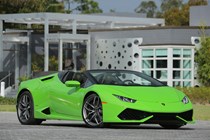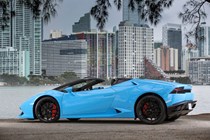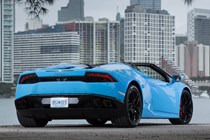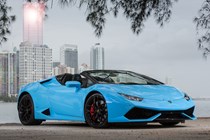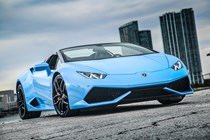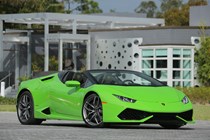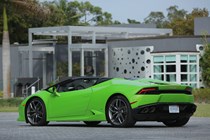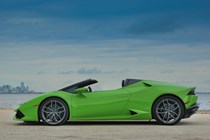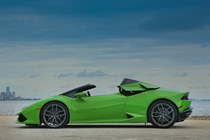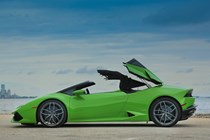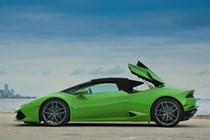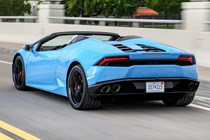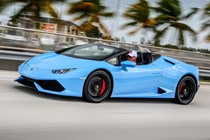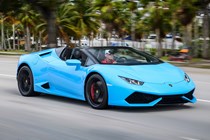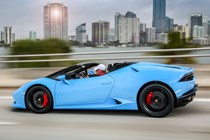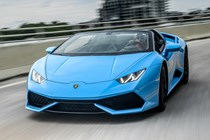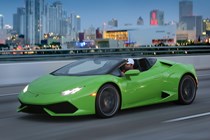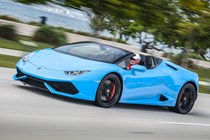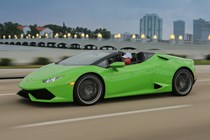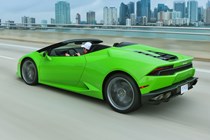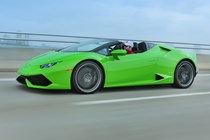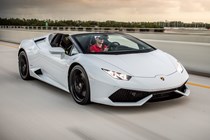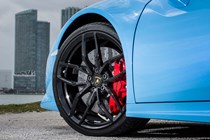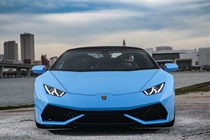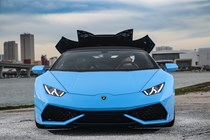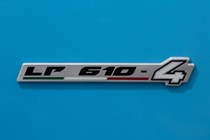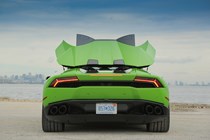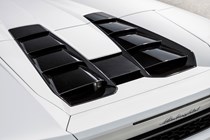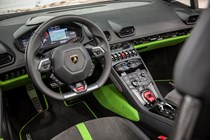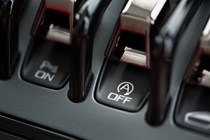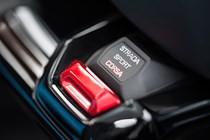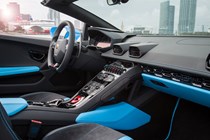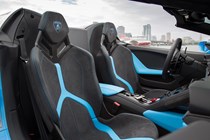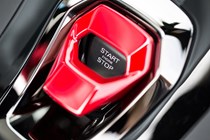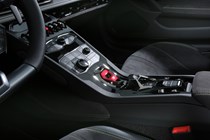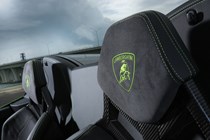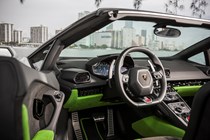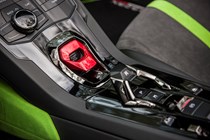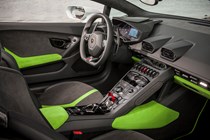
Lamborghini Huracan Spyder engines, drive and performance
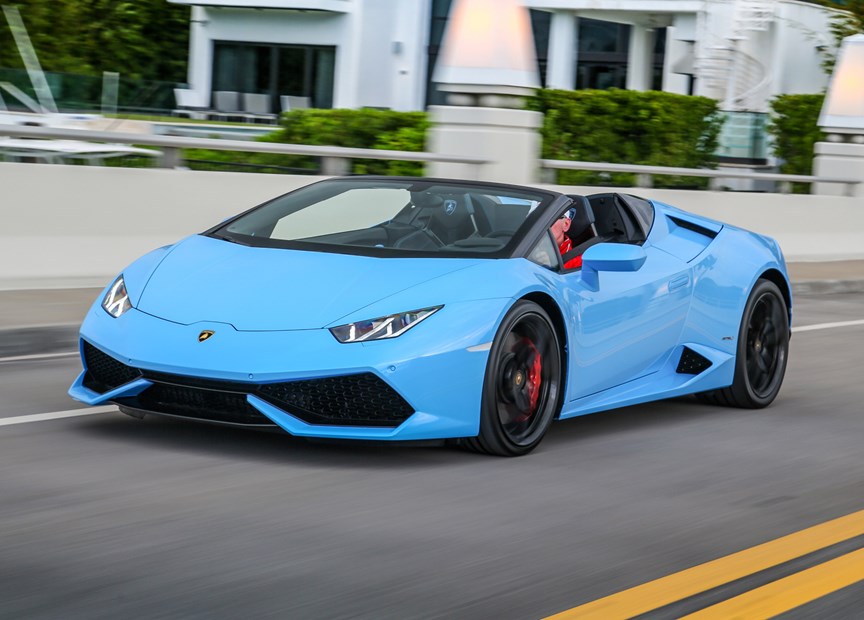
Weighing in at 1,542kg dry (Lamborghini only ever quotes weights without fluids), the Huracan Spyder is around 100kg heavier than the coupe – thank the soft-top mechanism and associated (hidden) roll-over protection for that. This additional bulk costs the Spyder 0.2 seconds over the 0-62mph sprint, but since it still sees off that benchmark in 3.4 seconds it’s unlikely to garner too many serious complaints.
The combination of four-wheel drive and dual-clutch automatic means you can generally access this performance without any recourse to launch control electronics at any time. The same probably cannot be said for the claimed 201mph top speed – but only because you’ll need a long stretch of private runway to attempt it. Impressively, the same top speed is quoted regardless of whether the roof is up or down.
Sounds fantastic
Its V10 engine makes an utterly fabulous noise, and if you switch from the standard Strada (‘Street’) driving mode – via the ‘Anima’ button positioned on the central spoke of the steering wheel – into Sport or the even more aggressive Corsa (‘Race’), you not only get sharper throttle response and swifter gearchanges but open up valves in the exhaust for an even louder experience. Some may find the popping and banging whenever you lift off the accelerator a bit much but we can’t imagine many such buyers would be looking at this particular car anyway.
Serious speed but simple to drive
The gearbox can be fully automatic or you can use the fixed paddles behind the steering wheel for manual control – activated either by pressing a button on the centre console or switching into the Corsa driving mode. There is no gear selection lever, just pull one of the paddles to go from neutral to drive, both of them to go back to neutral; reverse is accessed by another button. Gear changes are crisp, and only seem to get better the faster you drive.
And make no mistake, the Huracan Spyder is very, very fast indeed. With peak torque at 6,500rpm and peak power at 8,250rpm, you have to really rev it to access its maximum performance. But even on part throttle it can take your breath away, while the fast-revving nature of the V10 configuration means you never, ever feel like it’s letting you down.
Perhaps the most surprising thing about the Huracan is just how easy it is to drive. That’s not to say that the rival Ferrari and McLaren are especially difficult, but the Lamborghini’s sure-footed four-wheel drive feel quickly makes you relaxed and confident behind the wheel, even as it takes only the mildest flex of your right foot to remind you to respect its outrageous performance.
Muddying the waters slightly is the optional Dynamic Steering. This is a variable ratio system that’s designed to be light and quick-witted at low speeds to make manoeuvring around town and parking straight forward, yet slow and steady at high speeds on the motorway, in order to make the car less twitchy.
The tricky bit is that such variance can also make the front end of the car feel inconsistent, and thus slightly unnerving. However, it seems the system has been updated between the introduction of the Coupe and the Spyder, and it is now far more convincingly weighted and less prone to taking you by surprise. Good job, though we’d still be inclined to stick with the standard fixed-ratio rack for its greater consistency.
The steering weighting also changes with the driving mode, getting heavier as you switch out of Strada into Sport and Corsa; the latter two also have their own electronic stability control and four-wheel drive settings, designed to allow you to drive the car in a more dynamic fashion. However, outright grip is so high that you have to push very hard to explore this potential so you’ll rarely detect much difference on the road. Body roll in corners is barely discernible at road speeds, either.
Regardless of how you plan to drive it, rest assured the standard-fit carbon-ceramic brakes offer exceptional stopping power – which more than makes up for their occasional slight grabbiness and tendency to squeal at low speeds.


